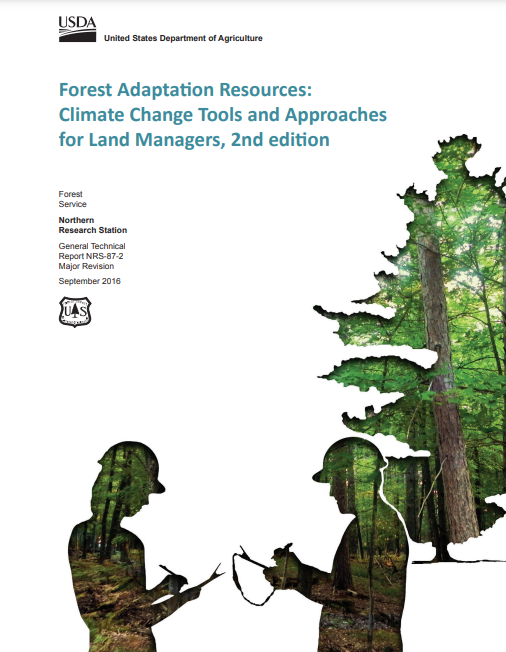Article /
Forest Adaptation Resources: Climate Change Tools and Approaches for Land Managers 2nd Edition

Introduction
This resource was submitted by the Climate Risk Institute for use by the CanAdapt Climate Change Adaptation Community of Practice.
This article is an abridged version of the original text, which can be downloaded from the right-hand column. Please access the original text for more detail, research purposes, full references, or to quote text.
The second edition of Forest Adaptation Resources: Climate Change Tools and Approaches for Land Managers, like its predecessor, is intended to provide perspective, information, and tools to land managers considering how to adapt forest ecosystems to a changing climate. Broadly, adaptation includes all adjustments, both planned and spontaneous, in natural and human systems in response to climatic changes and subsequent effects (Parry et al. 2007). In this document, however, we focus on planned, ecosystem-based adaptation activities that use a range of strategies and approaches for sustainable management, conservation, and restoration of forests in order to maintain ecosystem integrity and provide environmental benefits to people.
In this document we present a set of interrelated chapters, each of which serves as a resource to help managers incorporate climate change considerations into management and devise adaptation tactics that can be used to respond to climate change (Fig. 1). These resources are designed to be used across a wide diversity of ecosystems, scales, and values. They do not make recommendations or set policy, but rather provide information, ideas, and processes for evaluating climate change as one component of management (Box 1).
Chapter 1. Adapting to a Changing Climate: Overview of the Climate Change Response Framework describes the Climate Change Response Framework, summarizes the project components and subsequent outcomes, and provides a background for later chapters.
Chapter 2. Climate Change Vulnerability Assessments: a Brief Guide for Forest Managers is a guide for judging available vulnerability assessments, or even initiating a vulnerability assessment. Vulnerability assessments help users understand what ecosystem components may be at risk, which informs choices about adaptation.
Chapter 3. Adaptation Strategies and Approaches synthesizes a wide range of reports and peer reviewed publications on climate change adaptation and provides a “menu” of adaptation actions that are relevant to the upper Midwest and Northeast. Expert feedback was used to further refine the synthesis of existing literature and provide examples of specific adaptation actions.
Chapter 4. Urban Forest Strategies and Approaches follows the same intent and format as Chapter 3, but is specific to the challenges and opportunities of managing forests in urban natural areas and developed sites.
Chapter 5. Adaptation Workbook outlines a process for incorporating climate change considerations into management planning and activities, while also complementing existing processes and procedures for making decisions. It uses a workbook approach to provide step-bystep instructions for land managers to translate the Adaptation Strategies and Approaches (Chapters 3 and 4) into on-the-ground management tactics that help forest ecosystems adapt to climate change.
Chapter 6. Adaptation Demonstrations provides real-world examples of how the Adaptation Strategies and Approaches and the Adaptation Workbook can be used together to develop adaptation tactics (Fig. 1).
Citation: Swanston, Chris; Janowiak, Maria, eds. 2012. Forest adaptation resources: Climate change tools and approaches for land managers. Gen. Tech. Rep. NRS-87. Newtown Square, PA: U.S. Department of Agriculture, Forest Service, Northern Research Station.121 p.
- Climate change science applications and needs in forest ecosystem management
- Adapting to climate change: is there scope for ecological management in the face of a global threat?
- Integrating climate change adaptation into forest management
- Managing for multiple resources under climate change: national forests
